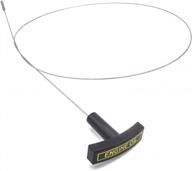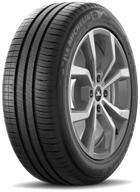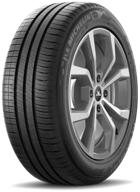
Review on 🔧 Enhanced Valve Adjusting Tools by Schley Products 88250 by Jeff Morris

So easy to use and worth every penny!
This review is for the Schley 88250 Valve Timing Tool. I have read several reviews that said this tool was of poor quality and difficult to use. This was NOT my experience. This product consists of two parts: valve bucket compression wrench and valve bucket holder. Both instruments are of very good quality. The wrench handles are strong and the metal jaws are smooth. The guard is made of heavy duty stamped metal, one "tooth" is longer than the other (that should be used). Several reviews claimed that it was difficult to use. I was able to easily master both instruments in less than 30 minutes. I successfully removed 8 valve seals in less than an hour including the cylinder 5 intake valve seal which I did not intend to remove (right row, cylinder 1,3,5 near the firewall). Preparation: Don't adjust TDC, just rotate the crankshaft until as many valve cones as possible are free to rotate, which also allows you to check clearance. approx. 45 degrees from the camshaft bearing cap). Clamp a wrench around the camshaft on the side of the lip away from the bearing cap. Turn the key to compress the valve. Place a locking tool (one long tooth) between the bearing cap and the cam (on the opposite side where you put the key). There is a very small width between the cam and the bearing cap to help align the locking tooth with the lip of the valve cup. Remove the key while holding the latch. Use a small flathead screwdriver (I used a box cutter blade) to pry the seal open. Lower the screwdriver and use the magnet on the shaft to pull out the gasket. You can safely depressurize the storage tool and depressurize the valve bucket (it won't hit the cam). CAUTION: Do not rotate the crankshaft with the shims removed as this may cause the camshaft to scratch the edge of the cam. Valve cup, causing damage to the petal. (I read someone learned this the hard way, not me!) TIPS: Bank 2 (2,4,6 cylinders) is the easiest bank, with the exhaust side being the easiest to remove. Bank 1 (cylinder 1,3,5) is not so easy, the exhaust is lighter than the intake. Use a small mirror (I used one from the compact makeup kit, not mine!) to see the notch on the Bank 1 flaps. Have a magnet ready. Use a small flashlight with a magnetic base.
- Engine Parts
- New Competitors Appeared
New products
Comments (0)
Top products in 🚀 Engines & Engine Parts

Robot vacuum cleaner Roborock S7 with self-cleaning base RU, white

22 Review

Synthetic engine oil LUKOIL Lux synthetic SN/CF 5W-40, 1 l, 1 kg, 1 pc.

35 Review

Ford 6.0 Powerstroke Oil Dipstick 2003-2007 F250 F350 F450 F550 Super Duty Excursion Diesel Engine Replace 3C3Z-6750-AA 917-310

22 Review

10Mm Drain Hose For Easy Oil Changes By RuggedMade

34 Review
Another interesting products

MICHELIN Energy XM2+ 175/70 R13 82T summer

29 Review

ARANA C16-08568 20" Gas Lift Struts - Perfect For Trucks, RVs, And Boats - 20 Lbs Capacity - 2Pcs Set

15 Review

1.5 Inch Leveling Lift Kit Compatible With 2004-2022 F150,Leveling Lift Kit Fit For 2004-2022 F150 2WD 4WD Forged Front Strut Spacers Raise The Front Of Your F150 By 1.5

13 Review

MICHELIN Energy XM2+ 205/65 R15 94V Summer

35 Review

